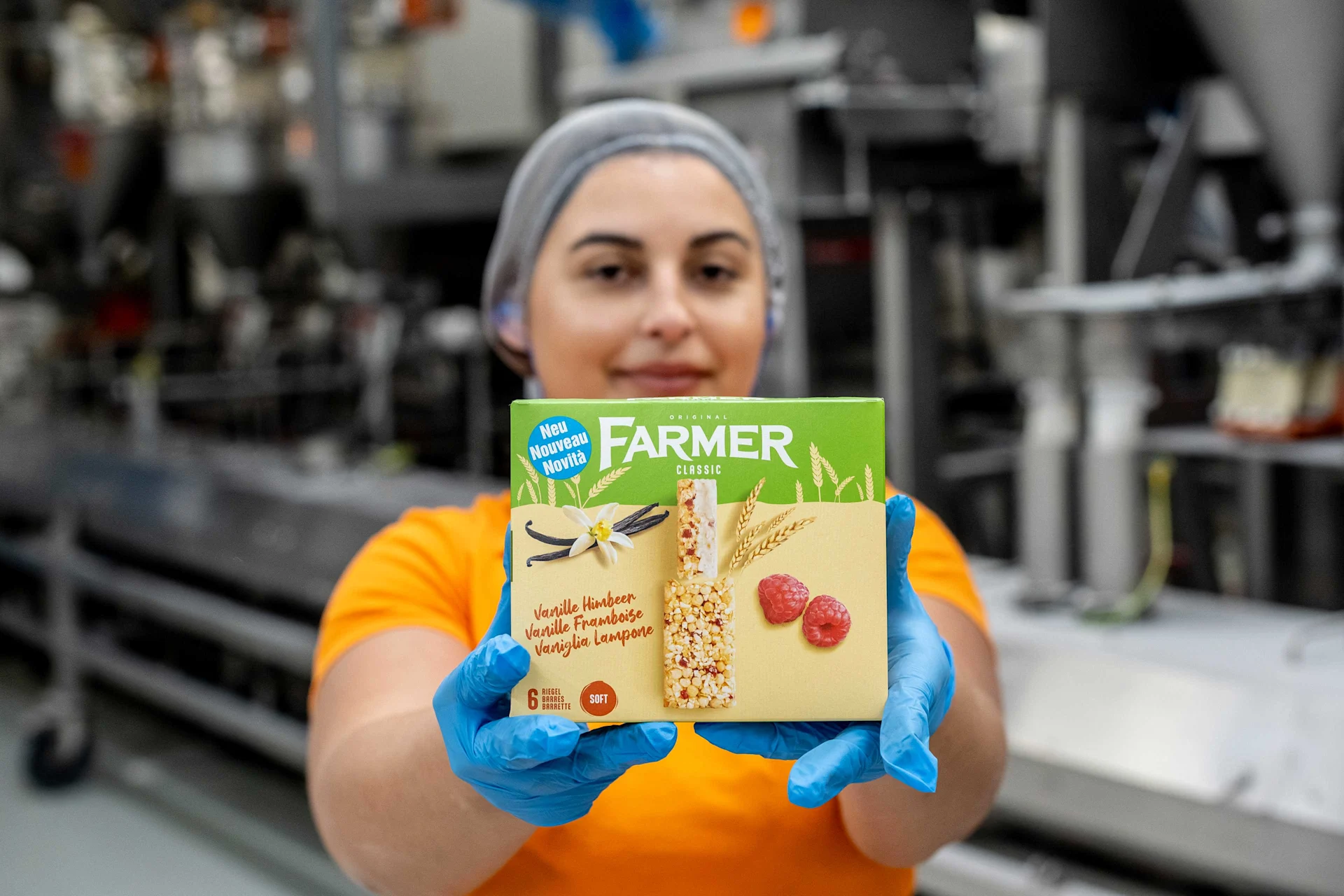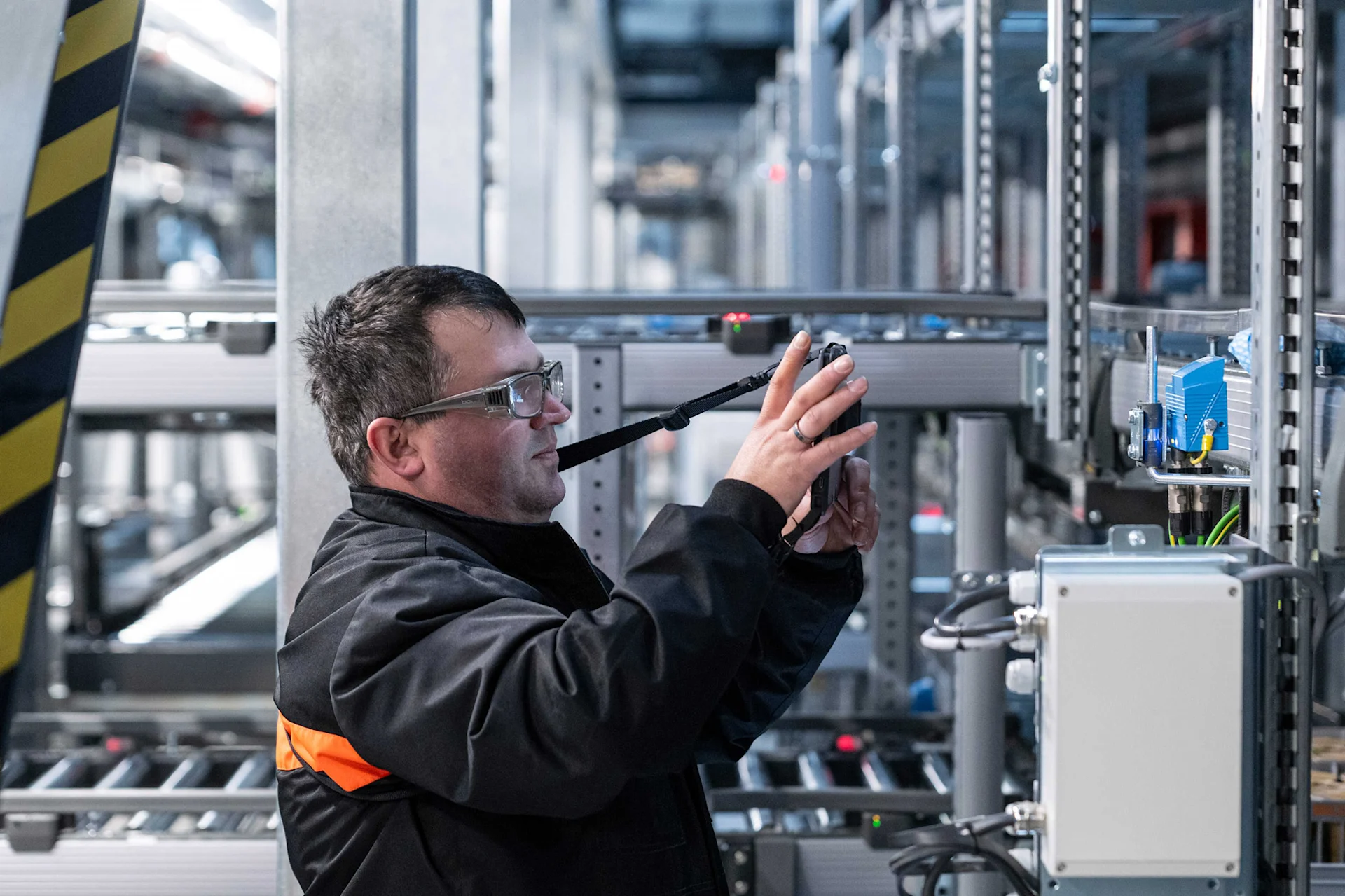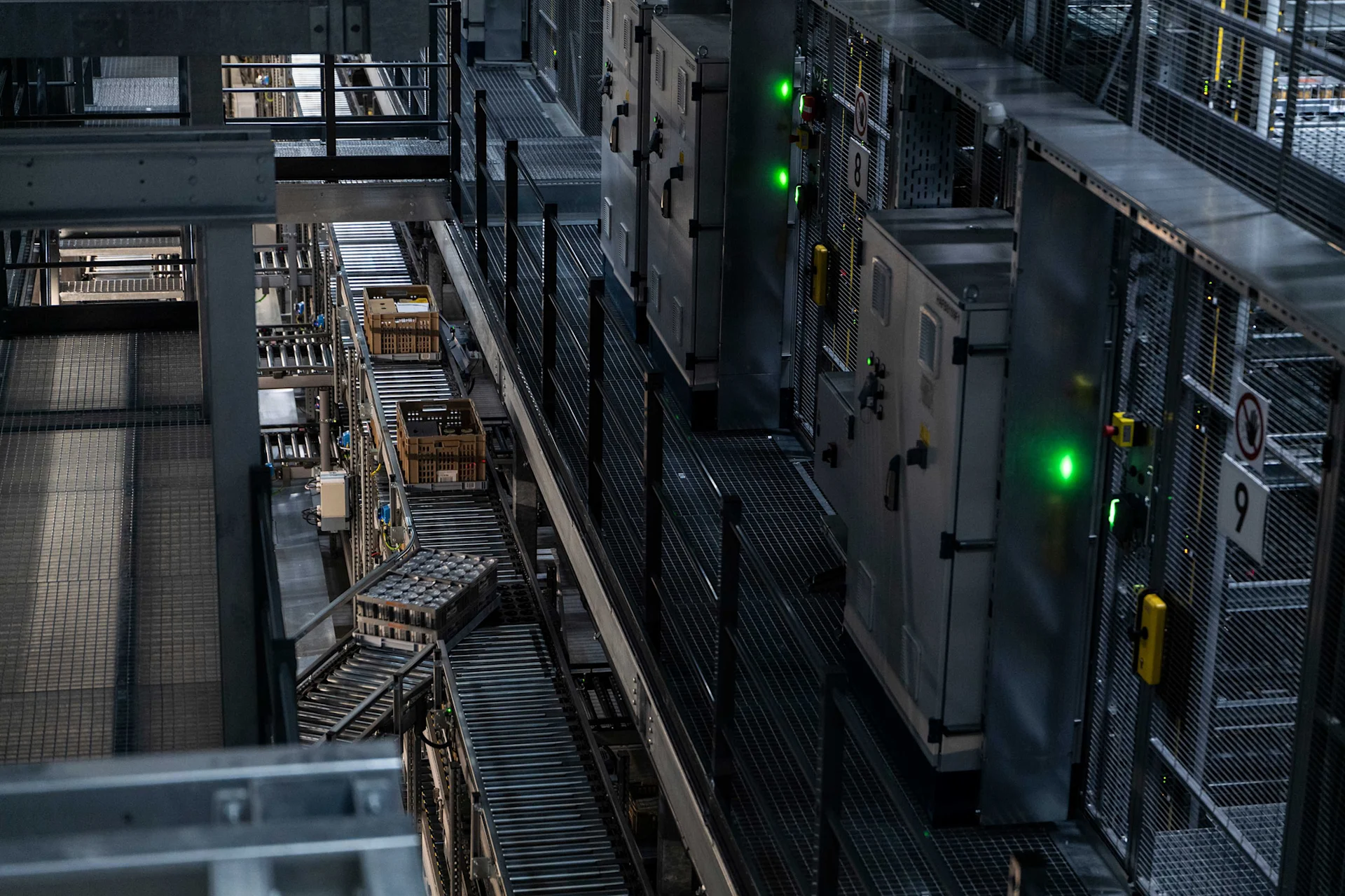
Migros Industrie
How farmer bars are made
The new vanilla and raspberry flavour is now on sale. We visited the factory where the bars are made.
navigation

Supermarket
Matthias Grossen is an error handler at a Migros distribution centre. But what exactly does that involve? And why must he wear warm clothing at work?
It’s 5.30 in the morning near Bern. While half of Switzerland is still asleep, Matthias Grossen is in a race with refrigerated goods. Containers packed with yoghurt, bacon cubes and salads whiz along conveyor belts - and he’s right alongside. There’s no time to waste! His tablet alerts him about a fault in the system. He speeds off to the scene of the incident along steel staircases and mezzanine floors.
42-year-old Grossen works at Operations Centre 4 in Schönbühl in Bern canton. All chilled products destined for Migros Aare supermarkets are delivered, stored, combined and dispatched at this facility. The state-of-the-art system is fully automated. Pallets move along the tracks as if by magic. Grossen is one of the few people in the building. As an error handler, he must ensure that goods keep flowing smoothly through the centre. If a blockage occurs somewhere, he must quickly identify and rectify the fault.
Wearing warm clothing in the building is an absolute must. After all, almost everywhere the temperatures range between 0 and 2 degrees Celsius to ensure that the goods remain fresh. Meat, fish, dairy products as well as pastries and ready-to-eat meals glide along the branched conveyor systems.
Grossen has arrived at the shuttle warehouse. This metal cage is the size of a football pitch and three storeys high. It can hold more than 37,000 containers of goods. Shuttles looking like robotic lawn mowers with flashing blue lights receive the containers and sort them.
One of the shuttles is glowing purple and won’t budge from the spot. “It’s probably a sensor error,” Grossen says. Optical sensors installed at every junction within the plant detect the labels on the crates. They thus ensure that each container ends up in the right place.
Grossen logs the fault on his tablet: “The tray holding the front container is lopsided.” This means that the sensor is covered. He therefore straightens the tray and activates the shuttle, which immediately hurtles off into the warehouse with its box. Now everything is flowing smoothly again.

Eight error handlers are employed in Schönbühl. Grossen’s shift always starts at 4am. The man from Frauenkappelen in the Bernese Mittelland region has got used to his early mornings. The only thing he finds challenging is the huge difference between the indoor and outdoor temperatures in summer. Nevertheless, he considers Operations Centre 4, which opened in May 2024, to be a godsend. “It has made my job much more interesting,” he says.
It has made my job much more interesting.
Grossen spent 14 years working as an unskilled order picker in the old distribution centre next door. This role mainly involved stacking containers onto pallets. “Back then, I needed lots of muscle power and not much brain power, whereas today it’s the other way around!” The only thing that sometimes aches now are his legs from all the running, he adds with a smile. How many steps does he do a day? Grossen pulls out his mobile phone to check: “30,000. That’s about right.”
Learning something new every day is one of the best aspects of his job. The facility is one of the most complex and largest platforms for fresh produce logistics in Switzerland - and this means that all sorts of errors can occur. For example, a pallet recently blocked an area where it shouldn’t even have been.
Several hundred faults occur every day. But that’s far fewer than when first operations began. Many are easily fixed; containers getting wedged, for example. “A gentle shove is often enough to solve the blockage,” Grossen says. If goods tip over and leak, he cleans up the mess himself. The sensors and light barriers must always be kept clean to ensure that containers are identified and sorted correctly.
His tablet flags up the next fault. This time it’s near the logistics bridge which crosses the A6 motorway, ten metres above the road. The bridge connects the new building with the old operations centre. Grossen notifies his team by chat that he'll deal with the fault. Then he briskly runs down the metal staircase and crosses the various zones.

Before reaching the source of the fault, he passes a crowd of people. “A pallet has tipped over,” a colleague explains. “A runner came loose.” While several people inspect the damage, a cleaning team begins clearing up the conveyor-belt track.
Grossen hurries off to the adjacent zone to deal with ‘his’ fault. “Wow!” he exclaims. A conveyor belt stacked with pallets has ground to a halt. One of its rollers has broken at the point where a lift transports the pallets up to the next level.
“This has to be escalated to the second level,” Grossen immediately realises. By this he means the technicians in the error handling team, who are called out whenever faults require the use of special tools. “Faults must be rectified quickly, otherwise you risk delaying the loading of goods,” he explains.
Having reported the damage, Matthias Grossen looks at his watch. “Time for coffee!” Four hours to go until his shift ends. He's already looking forward to the weekend off with his partner and 14-year-old son. For two years, he drove to Olten every Saturday to undergo training alongside his full-time job. In June 2024, Grossen completed his apprenticeship and received a federal diploma as a logistics technician, specialising in warehousing. “I’m really grateful to have been given that opportunity.”
Discover exciting stories about all aspects of Migros, our commitment and the people behind it. We also provide practical advice for everyday life.